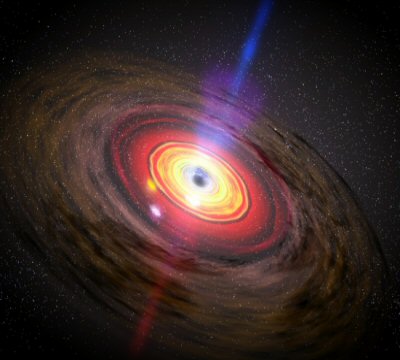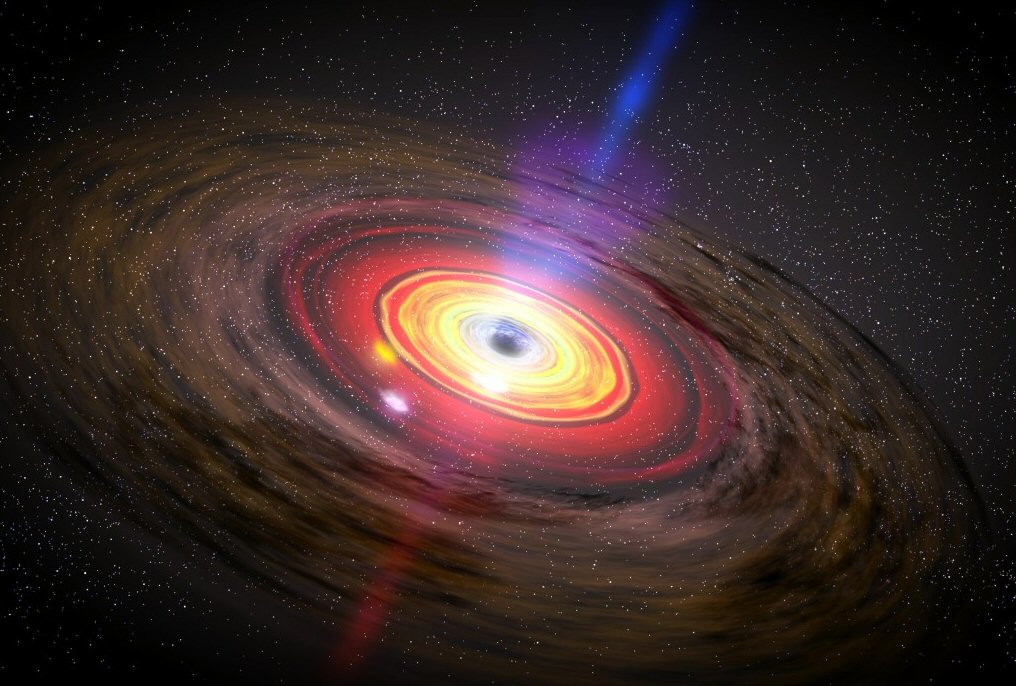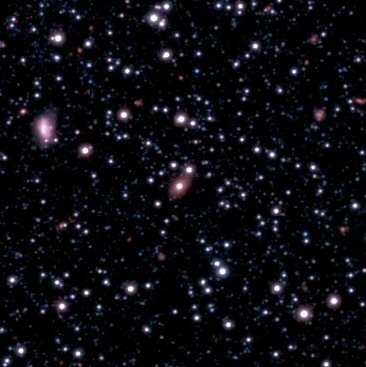
29 Sep Too large a black hole
Southern African Large Telescope reveals too large a black hole

An artist’s impression of an active galactic nucleus, with jets of material flowing from a central black hole. (Credit: NASA / Dana Berry / SkyWorks Digital)
The Southern African Large Telescope (SALT), Africa’s most powerful eye on the sky, has been used to discover a supermassive black hole in the centre of a modest galaxy, SAGE0536AGN. All but the smallest galaxies are thought to harbour a black hole, but in this case the black hole was found to be thirty times more massive than what one would have expected for this size galaxy. It leaves scientists scratching their heads in pursuit of an explanation.
The presence of a black hole was suspected when the infrared emission from its dusty environs was discovered in 2009 using NASA’s Spitzer Space Telescope. Now, scientists from the United Kingdom SALT Consortium, Jacco van Loon from Keele University and Anne Sansom from the University of Central Lancashire used the SALT to take a spectrum of the galaxy. The spectrum showed emission at particular wavelengths related to hydrogen gas, but shifted to redder wavelengths than on Earth due to the large recession velocity of the galaxy, placing it at a distance from which light took 1.86 billion years to reach us. This already indicated that the central engine of the galaxy must be very luminous. The spread in wavelength of the hydrogen emission betrayed gas moving very rapidly in the strong gravitational field of the black hole, and from this the mass of the black hole was determined to be 350 million times that of the Sun. For comparison, this is a hundred times more massive than the black hole that lives in the centre of our own Milky Way. However, when they also measured the mass of the galaxy itself, from the absorption of light by heavier atoms, they were surprised to find the galaxy’s mass to be a mere 25 billion times that of the Sun, less than that of the Milky Way!

An image of the galaxy SAGE0536AGN, from the Vista Magellanic Clouds survey. The galaxy is the elliptical object in the centre of the image. (Credit: Vista Magellanic Clouds survey)
Says Jacco van Loon: “For a long time, scientists have been trying to explain the good observed relationship between the mass of the black hole and the mass of the galaxy host. Now they will need to start explaining how some systems can deviate so much from this relationship.”
Because the galaxy was only found by accident in the distant background of a survey meant to study a very nearby dwarf galaxy, surveys aimed at finding extragalactic supermassive black holes may have missed more systems like SAGE0536AGN. SALT may thus have opened a new window, and a new view of how galaxies and their central engines have grown over time.
Contacts
Dr Jacco van Loon: j.t.van.loon@keele.ac.uk
Dr Steven Crawford: crawford@saao.ac.za or 021 460 9359

